
With every passing year, the market for full-backs becomes more and more complex, just like the position itself. Unlike 20 years ago, full-backs these days are required to be experts both physically and technically.
The demands on full-backs are growing further and further with every tactical evolution and it has become hard even for the wealthiest clubs, those from the Premier League, to find suitable options for that position.
With the pool of left-footed footballers being naturally smaller, the left-back position has suffered more from the increasing demands for top-level wide defenders.
A lot of players that previously would’ve started as defensive full-backs, on the left side of a flat back-four, are now being converted into LCBs, due to a lack of attacking threat.
On the other hand, players like ex-Real Madrid star Marcelo (an extreme example), who have the technical ability to beat multiple opponents 1v1 and retain the ball in tight areas but struggle defensively, are being moved to RW, where they can make the most of their attacking talents.
In this article, we’re going to look at three left-back alternatives (below the age of 30), from outside of Europe’s top 5 leagues, who could potentially make the jump to a Premier League club and instantly make a difference in that position.
We’re going to take a deep dive into their profiles, strengths, weaknesses, and potential to make the transition to the most competitive league in the world.
Leif Davis
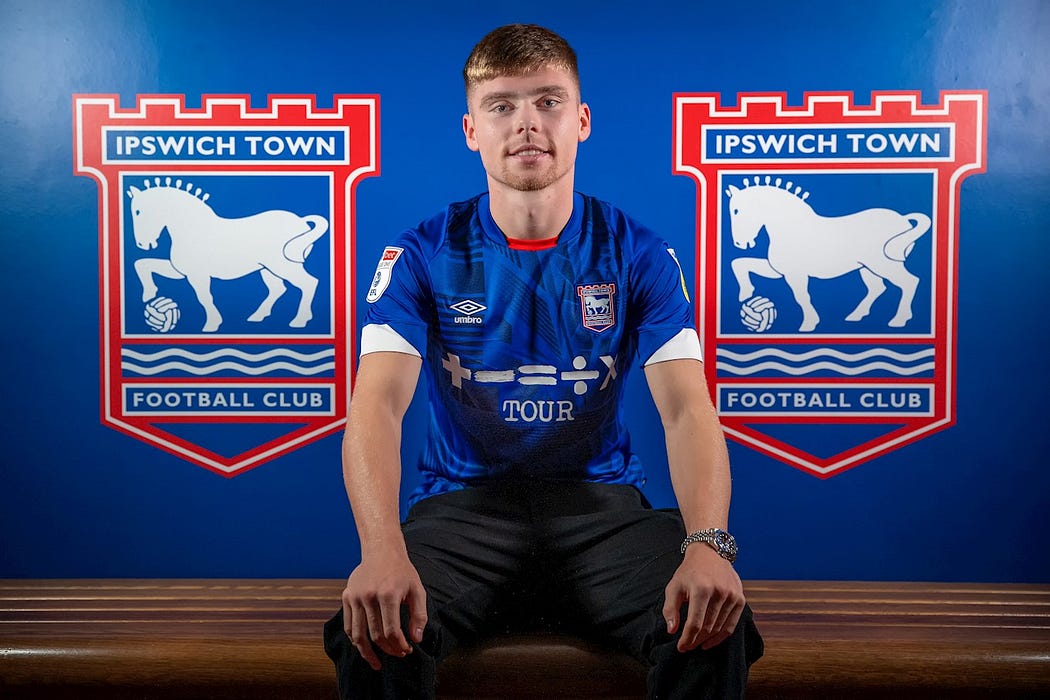
(Image: itfc.co.uk)
The first name on the list is Ipswich’s Leif Davis, who was recently named as part of the Championship TOTS for 23/24.
The Leeds United youth product is currently playing his second season at Portman Road, having joined from Bournemouth back in 2022.
Profile
For Kieran McKenna’s team, Davis plays high and wide, as a very attacking full-back, keeping the width on the left-hand side.
In the first phase of buildup, Ipswich mainly play out in a 2–4 or a 4–2 shape, where the full-backs push high, to stretch the opposition and open up space.
Devis is usually the player that pushes the furthest forward, to provide width, allowing the left-winger to tuck inside, and giving the option for a long diagonal switch from the right, when the Tractor Boys are being heavily pressed on that side.
The Newcastle-born defender is very comfortable in that role, where he’s positioned almost as a classic left-wing-back, and is given the license to exploit space with and without the ball.
Being closer to the goal allows Davis to make the most of his brilliant ball-striking technique, something that’s widely considered his biggest strength.
At times, Davis has also played as a left-sided CB, in a back-three and a back-four, mainly for Leeds and their youth teams.
It’s a role he can play to a decent standard, due to his calmness on the ball, ability to carry in space, and excellent weight of pass, but it’s one that limits his impact going forward and doesn’t make the most of his great crossing.
Strengths
As seen from his statistical pizza chart below, Leif Davis excels in a lot of the creative metrics, which explains why he’s being played so high up the pitch for his club side.
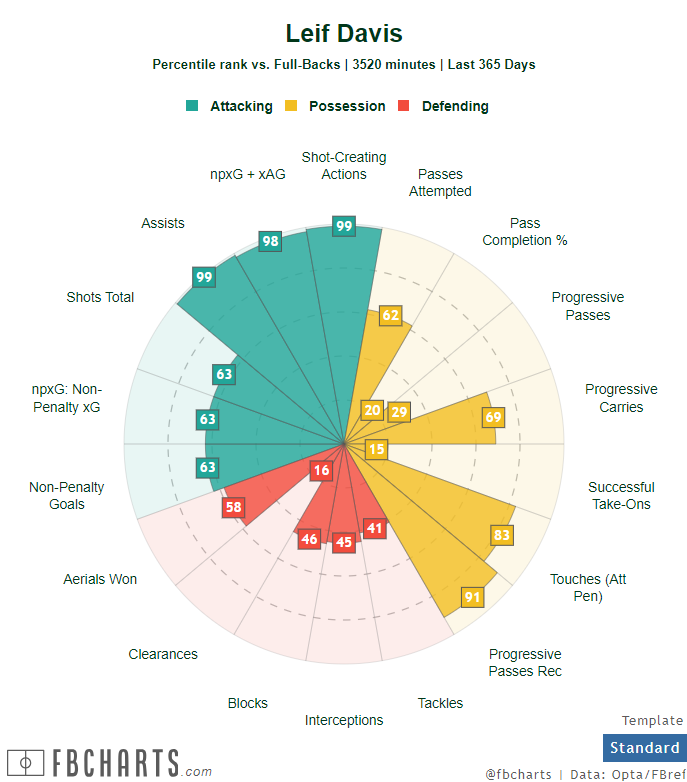
Compared to his positional peers, in Opta’s top 14 leagues, Leif ranks in the top 10% for Assists, xAG, npxG+xAG, and Progressive Pases Received.
The main reason for this is his exceptional crossing ability. Both from set pieces and open play, Davis’ technique is one of the best you’ll find in England and his 17 assists in 40 games are further proof of that.
There is variety, power, precision, finesse, and, most importantly, efficiency in his deliveries that have been described as “Trent-esque”.
With his current rate of 0.43 Assists per 90, Davis is on track to break the current Championship assists record, currently held by Harry Wilson (19).
Davis is already the most prolific defender in the history of the competition, in terms of providing, leapfrogging Kieran Trippier and Barry Douglas, who previously held the record with 14.
It’s also worth noting that this season he ranks comfortably in the top 10 Championship players for xAG (9.8) and Chances Created (115).
Weaknesses
It’s easy to say that Davis has no significant weaknesses, and that wouldn’t be far from the truth, but it is worth mentioning that he has some areas that can be improved.
As seen from his FBRef profile, he ranks pretty low, in terms of defensive metrics, but that’s largely down to his aggressive positioning and the fact that he’s usually not part of the rest defence setup.
Another thing that stands out, in a negative sense, is his low % of successful take-ons and dribbles completed (0,4 p90).
While Davis is good at carrying the ball into open space, he’s not the most press-resistant player and isn’t great at beating players 1v1, from a standing position.
Potential Clubs
Brentford — Playing mainly in a 3–5–2, with attacking full-backs, with minimal responsibility in the buildup. Leif could benefit from a similar setup.
Aston Villa — In Unai Emery’s 4–4–2, the full-backs are usually tasked with keeping the width and pushing very high, to provide creativity from wide areas. Something that would suit Davis down to a tee.
Ferdi Kadıoğlu
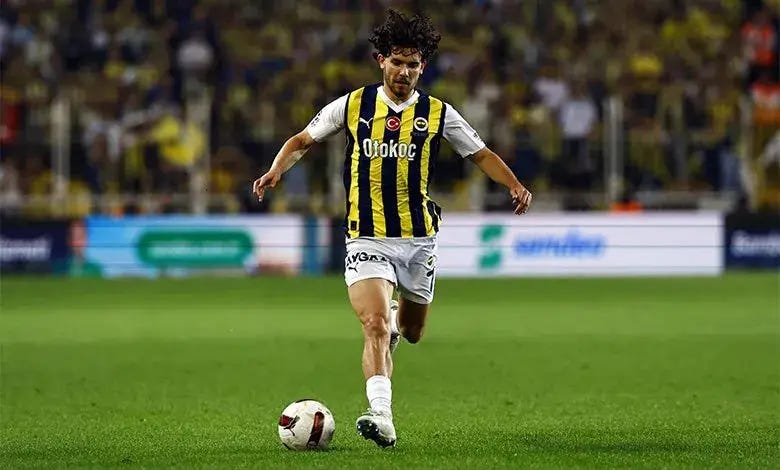
(Image: fenerbahcefootba.com)
Despite being naturally right-footed, Ferdi has been one of the best-performing full-backs outside of the so-called top five leagues.
The versatile Turkish international started his footballing education in the Netherlands, with NEC Nijmegen, where he played mainly as a #10 and a right-winger.
When he moved to Fenerbahçe, he was converted to a full-back, due to his press-resistance, IQ, explosives, and ball-carrying from deep.
Profile
When you watch Ferdi play, it’s clear to see in his game that he was naturally an offensive player. He is creative with his dribbling, aggressive in his off-ball movements, and possesses a small turning radius that’s not standard for defenders.
The Fenerbahçe LB has a versatile skillset that makes him unique in the way he approaches the role. He can overlap to create space for the winger to cut in, he can arrive in the box with underlapping runs, or he can even invert to give a central option in possession.
His previous experience in different roles has influenced the way Kadıoğlu plays and that could potentially make him attractive for big clubs that want their FBs to be tactically flexible.
Strengths
In the pizza chart below, we can see Kadıoğlu’s stats compared to other Süper Lig full-backs, who have played at least 1500 minutes in the 23–24 season.
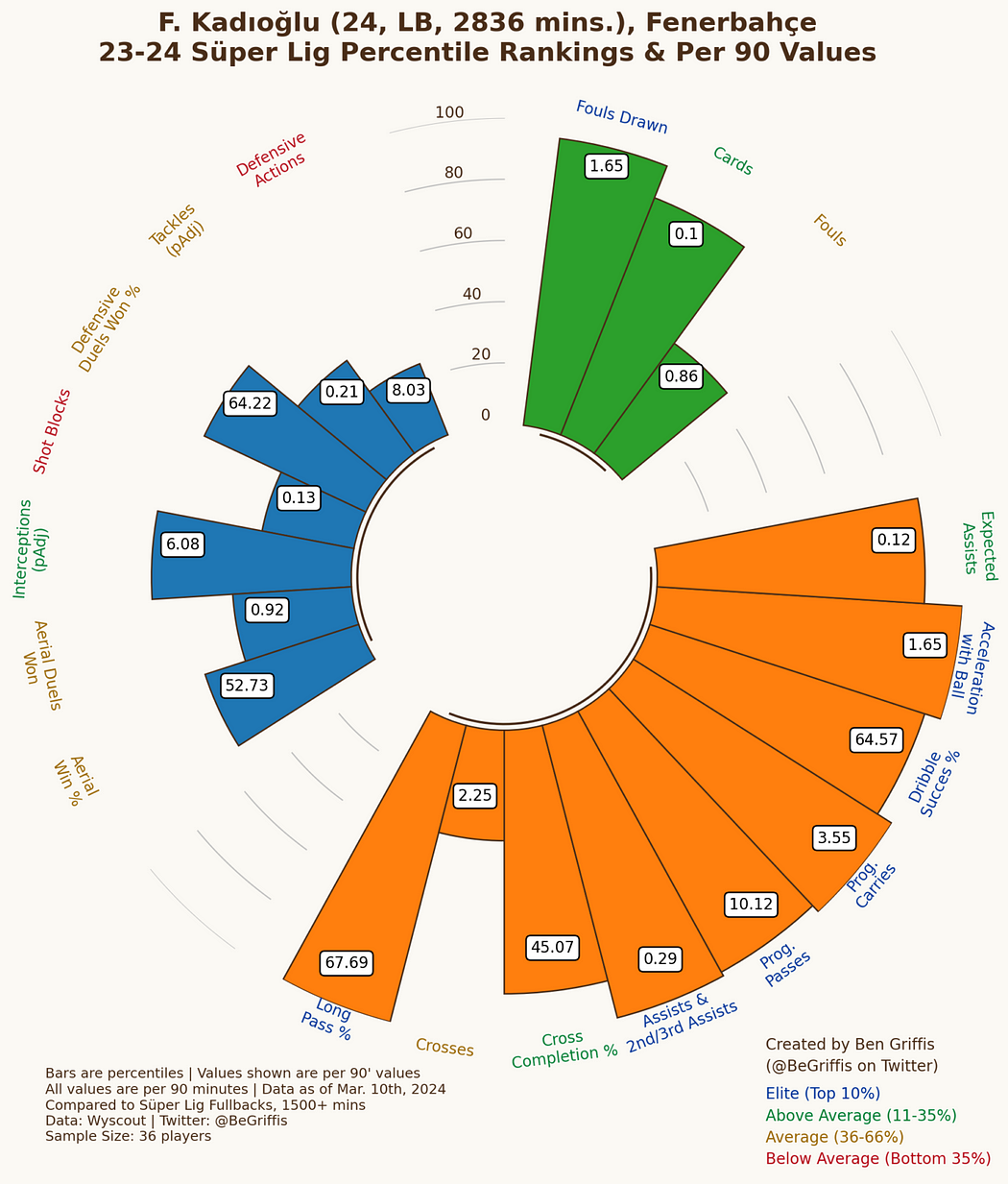
(Image: Streamlit by Ben Griffis)
As we can see, the 24-year-old excels in pretty much every possible in-possession stat, ranking in the top 10% for Long Pass %, Assists (+2nd and 3rd assists), Progressive Passes and Carries, Dribble Success %, and Acceleration with Ball.
All this shows that he’s not only extremely creative with the ball, but he’s also secure in possession and effective, rather than wasteful, with his actions.
More often than not, his pass selection is very good, even under intense pressure, and his ability to execute difficult passes off both feet makes him a valuable asset.
Ball striking is another strength of Ferdi’s. He’s not someone who scores a ton of goals (four in his last 60 league games), but he has the quality to
https://twitter.com/AlexGangueRuzic/status/1432085080999022593/video/1
Weaknesses
Considering that he just recently made the switch to the left side of the defence, it’s fairly easy to make an educated guess what Kadıoğlu’s main issues are.
Defensive positioning and 1v1 defending are the two main areas where he could struggle if he does eventually move to one of the biggest leagues in the world.
Then again, it should be noted that Ferdi has the durability and physical strength to cope with the high intensity that is required in that position, he simply needs to improve his understanding of it.
Potential Club
Arsenal — The Gunners have reportedly been looking for a new left-back option and the Turk makes a lot of sense for them. Similarly to Oleksandr Zinchenko, he’s comfortable when inverting into the pivot but can also provide an overlapping option for his winger.
Wolverhampton — With the possible departure of Rayan Aït-Nouri, Kadıoğlu might be an interesting option for Wolves. Both thrive with the ball at their feet and are tactically adaptable.
Maxim De Cuyper
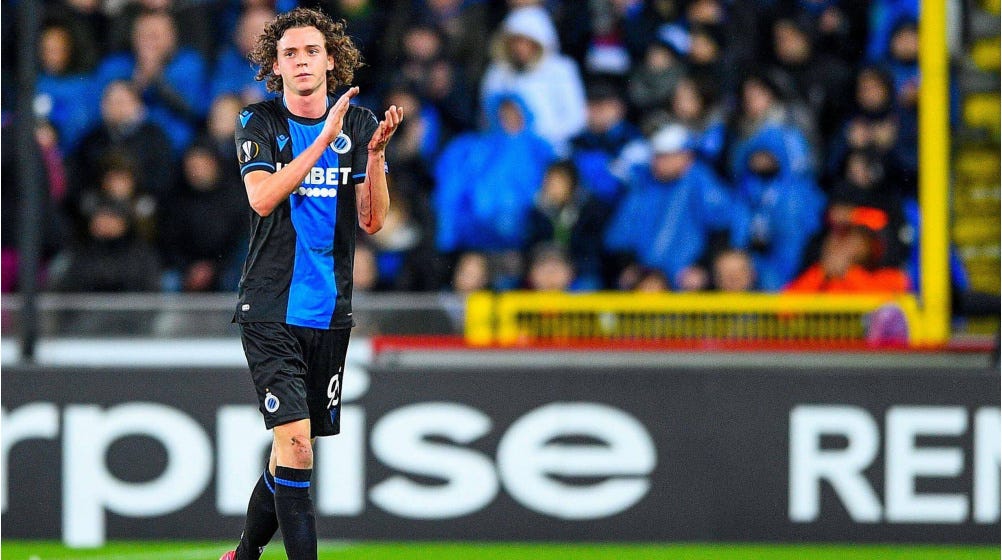
(Image: transfermarkt.com)
Last but not least, comes Club Brugge’s Maxim De Cuyper, the definition of a “Swiss-army knife” footballer.
This has been MDC’s first full season as a starter at the Jan Breydel Stadium, where he managed to establish himself after a very successful loan campaign with KVC Westerlo.
Profile
As already mentioned, De Cuyper’s biggest strength is his versatility and capacity to influence the game in all phases of play, which has also allowed him to perform on a high level when deputizing at RB.
At Brugge, he mainly plays as a left-back in a conventional 4–2–3–1 system, where he’s given the license to push higher and overlap his inverted winger.
But Maxim is not just your average attacking full-back. As seen from his SofaScore heatmap below, he’s someone who gets loads of touches in deeper areas as well and that’s down to his ability to progress the ball both via carrying and passing.
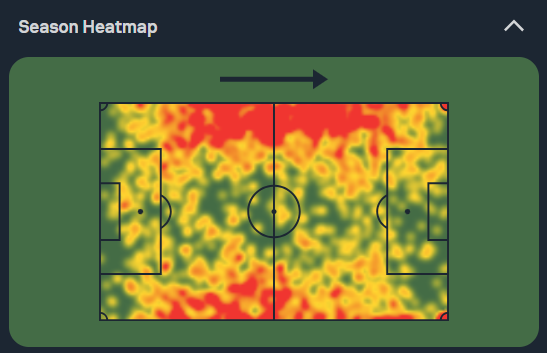
(Image: SofaScore)
Strengths
MDC’s main strengths lie in his ability to make things happen, regardless if we’re talking about a cheeky dribble to get past the first line of pressure or an early cross from 25 yards out, he always looks to play positive.
A good example of this is his so-called Progressive Actions. These are the passes and carries that move the ball toward the opponent’s goal line at least 10 yards or more from its furthest point in the last six passes.
According to FBRef, De Cuyper ranks in the 98th percentile for Progressive Passes by full-backs in Opta’s top 14 leagues, with 7.45 per 90, and in the 57th percentile for Progressive Carries (2.25 per 90).
Not only that, but the Belgian ranks in the top 1% for Shot Creating Actions by a defender (4.14) and that shouldn’t be a surprise for anyone who’s watched him before.
In Club Brugge’s preferred system, De Cuyper typically operates higher than the rest of his defensive line, regardless of which side he’s occupying, with a midfielder dropping to fill the vacated space in the buildup.
From his advanced position, he’s then capable of creating from various situations, with his two-footedness making him a serious two-way threat to opposition defenses.
The 23-year-old is also a very refined set-piece taker and is usually one of Brugge’s main weapons from dead-balls, particularly excelling from crossing positions.
Weaknesses
Similar to Leif Davis and Ferdi Kadıoğlu (mentioned above), De Cuyper is a massive asset offensively but can be a bit of a suspect defensively, especially without the ball.
The Belgium U21 international, who’s yet to be called to the senior side, tends to overcommit in tackles and duels and has struggled with underlapping runs at times during the season.
His struggles in 1v1s and 2v1s also lead to him making some unnecessary fouls in wide zones, but that’s something that can easily be improved with time and experience.
Last and probably least, the former Westerlo loanee might have to polish his aerial game, if he wants to play in the most physically demanding league on the planet. At the moment, he wins just over one aerial dule per 90 minutes, according to Opta, and considering that he’s 186cm tall, he could definitely improve on that.
Potential Club
Chelsea — It’s been widely reported that The Blues will be looking for a new left-back this summer and De Cuyper might be a smart option if they want to continue with their current recruitment strategy. His on-ball quality and creativity would no doubt appeal to Mauricio Pochettino.
Bournemouth — If The Cherries eventually do lose Milos Kerkez in the next transfer market, it might be smart to look at someone like MDC as a potential replacement. Similar to Kerkez, De Cuyper thrives in transitional situations and arguably offers even more going forward.